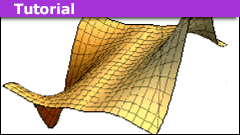
The Art of Integration
/
0 Comments
Abstract
My school teacher used to say
"Everybody can differentiate, but it takes an artist to integrate."
The mathematical reason behind this phrase…

Reduction of Order For Recursions
This is not meant as a full introduction to recursion relations but it should suffice for just about any level of the student.Most of us remember recursion…

A Novel Technique of Calculating Unit Hypercube Integrals
Introduction
In this insight article, we will build all the machinery necessary to evaluate unit hypercube integrals by a novel technique. We will first…
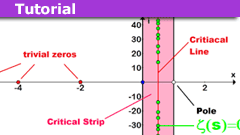
The Extended Riemann Hypothesis and Ramanujan’s Sum
Riemann Hypothesis and Ramanujan's Sum ExplanationRH: All non-trivial zeros of the Riemannian zeta-function lie on the critical line.
ERH: All…

A Trick to Memorizing Trig Special Angle Values Table
In calculus classes when you are asked to evaluate a trig function at a specific angle, it's 99.9% of the time at one of the so-called special angles we…

An Introduction to Theorema Primum
Introduction
Whilst no doubt most frequenters of "Physics Forums" will be familiar with Nicolaus Copernicus as the scientist who advanced the (at the…
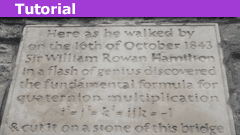
Python’s Sympy Module and the Cayley-Hamilton Theorem
Two of my favorite areas of study are linear algebra and computer programming. In this article I combine these areas by using Python to confirm that a…

Physical Applications of the “Tan Rule”
Introduction
Every secondary school student who has encountered trigonometry in his/her Math syllabus will most likely have come across the sine, cosine,…
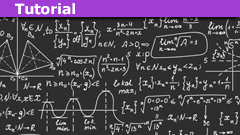
Investigating Some Euler Sums
So, why only odd powers? Mostly because the even powers were solved by Leonard Euler in the 18th century. Since the “mathematical toolbox” at that…
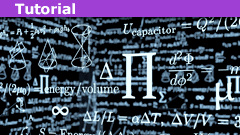
Computing the Riemann Zeta Function Using Fourier Series
Euler's amazing identity
The mathematician Leonard Euler developed some surprising mathematical formulas involving the number ##\pi##. The most famous…

Geometry of Side-side-angle (SSA) and Impossible Triangles
What is the ambiguous case?
In high school geometry, the idea of proofs is often first introduced to American students. A common task is to use a basic…

How to Solve Second-Order Partial Derivatives
Introduction
A frequent concern among students is how to carry out higher order partial derivatives where a change of variables and the chain rule are…
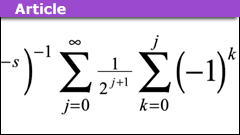
The Analytic Continuation of the Lerch and the Zeta Functions
Introduction
In this brief Insight article the analytic continuations of the Lerch Transcendent and Riemann Zeta Functions are achieved via the Euler's…
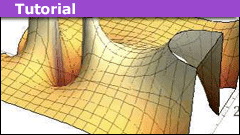
A Path to Fractional Integral Representations of Some Special Functions
Introduction
This bit is what new thing you can learn reading this:) As for original content, I only have hope that the method of using the sets
$$C_N^n:…

Explore the Fascinating Sums of Odd Powers of 1/n
The goal is to get a little bit closer to the values of the zeta function (ζ(s)) and the eta function (η(s)) for some odd values of s. This insight is…
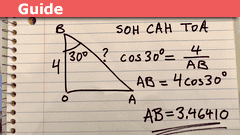
SOHCAHTOA: Seemingly Simple, Conceivably Complex
What is SOHCAHTOA
SOHCAHTOA is a mnemonic acronym used in trigonometry to remember the relationships between the sides and angles of right triangles.…
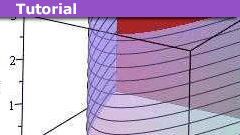
Demystifying Parameterization and Surface Integrals
Introduction
This article will attempt to take the mystery out of setting up surface integrals. It will explain the basic ideas underlying surface integration…

Demystifying the Chain Rule in Calculus
Introduction
There are a number of posts on PF involving a general confusion over the multi-variable chain rule. The problem is often caused by…

How to Make Units of Measurement Work for You
How do we use units? You may see one of these speed limit signs, nearly every day. Even though neither of them displays units, drivers know they are implied.…

A Journey to The Manifold SU(2): Representations
Part 1
Representations
Image source: [23]
6. Some useful bases of ##\mathfrak{su}(2,\mathbb{C})##
Notations can differ from author…

Learn Further Sums Found Through Fourier Series
In an earlier insight, I looked at the Fourier series for some simple polynomials and what we could deduce from those series. There is a lot more to be…
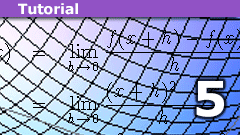
The Pantheon of Derivatives – Part V
Important Theorems - biased, of course
Implicit Function Theorem [1]
Jacobi Matrix (Chain Rule).
Let ## (x_0,y_0 ) ## be a point in$$U_1…
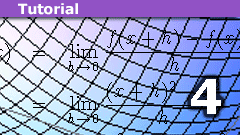
The Pantheon of Derivatives – Part IV
Lie Derivatives
A Lie derivative is in general the differentiation of a tensor field along a vector field. This allows several applications…
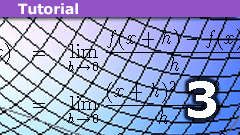
The Pantheon of Derivatives – Part III
Some Topology
Whereas the terminology of vector fields, trajectories, and flows almost by itself suggests its origins and physical relevance,…
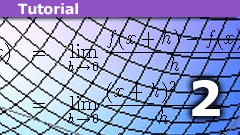
The Pantheon of Derivatives – Part II
Generalizations Beyond ##\mathbb{R}## and ##\mathbb{C}##
As mentioned in the section on complex functions (The Pantheon of Derivatives - Part…

The Pantheon of Derivatives – 5 Part Series
Differentiation in a Nutshell
I want to gather the various concepts in one place, to reveal the similarities between them, as they are often…
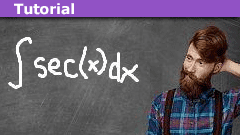
Trick to Solving Integrals Involving Tangent and Secant
This little trick is used for some integration problems involving trigonometric functions is probably well-known, but I only learned it yesterday. So…
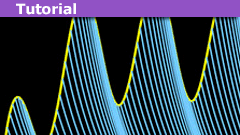
Using the Fourier Series To Find Some Interesting Sums
Preliminaries
If f(x) is periodic with period 2p and f’(x) exists and is finite for -π<x<π, then f can be written as a Fourier series:
[itex]f(x)=\sum_{n=-\infty}^{\infty}a_{n}e^{inx}…

Learn Partial Differentiation Without Tears
Differentiation is usually taught quite well. Perhaps that's because it is the first introduction to calculus, which is considered a big step in a student's…
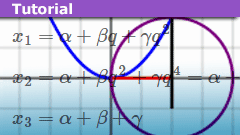
Learn How to Solve the Cubic Equation for Dummies
Everybody learns the "quadratic formula" for solving equations of the form [itex]A x^2 + B x + C = 0[/itex], even though you don't really need such a formula,…
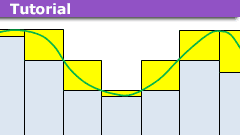
Omissions in Mathematics Education: Gauge Integration
The current (pure) mathematics curriculum at the university is well established. Most of the choices made are sensible. But still, there are some important…

Explaining the General Brachistochrone Problem
Consider a problem about the curve of fastest descent in the following generalized statement. Suppose that we have a Lagrangian system $$L(x,\dot x)=\frac{1}{2}g_{ij}(x)\dot…

Some Misconceptions on Indefinite Integrals
Integration is an incredibly useful technique taught in all calculus classes. Nevertheless, there are certain paradoxes involved with integration that…
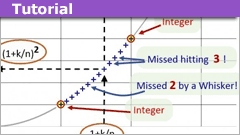
Mathematical Irrationality for Dummies
On one of my restless wanderings around the Internet, I came upon a collection of proofs of the statement that the square root of 2 is an irrational…

Learn Complex and Irrational Exponents for the Layman
This Insight is part of our "Young Authors" series, where talented young students showcase their knowledge.
This is how both you and I learned…
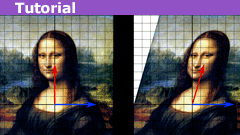
What Are Eigenvectors and Eigenvalues in Math?
Two important concepts in Linear Algebra are eigenvectors and eigenvalues for a linear transformation that is represented by a square matrix. Besides…

Introduction to Partial Fractions Decomposition
Partial fractions decomposition is an algebraic technique that can be used to decompose (break down) a product of rational expressions into a sum…

How to Solve Nonhomogeneous Linear ODEs using Annihilators
My previous Insights article, Solving Homogeneous Linear ODEs using Annihilators, discussed several examples of homogeneous differential equations, equations…

Solving Homogeneous Linear ODEs using Annihilators
In this Insights article we'll look at a limited class of ordinary differential equations -- homogeneous linear ODES with constant coefficients. Although…

Learn About Matrix Representations of Linear Transformations
Let X and Y be finite-dimensional vector spaces. Let ##T:X\to Y## be a linear transformation. Let ##A=(e_1,\dots,e_n)## and ##B=(f_1,\dots,f_m)## be ordered…

Informal Introduction to Cardinal Numbers
Cardinal numbers
We will now give an informal introduction to cardinal numbers. We will later formalize this by using ordinal numbers. Informally, cardinal…

Is There a Rigorous Proof Of 1 = 0.999…?
Yes.First, we have not addressed what 0.999... actually means. So it's best first to describe what on earth the notation [tex]b_0.b_1b_2b_3...[/tex]…

Errors in Probability: Continuous and Discrete Distributions
1. Classifying as discrete, continuous, or mixed
These statements (or equivalents) can be found in authoritative-seeming websites:X "A random variable…

Frequently Made Errors in Probability: Conditionals in Natural Language
1. Turning a verbal condition into Algebra
An actual thread..."A study of auto accidents has found that 40% of all fatal accidents are…

Some Conceptual Difficulties in the Roles of Variables and Constants
1. Variables and Constants
When is a constant not a constant? When it varies.In the standard equation ##y=ax+b##, we are used to thinking of x and…

A Continuous, Nowhere Differentiable Function: Part 2
This is Part 2 of a series of articles in which the goal is to exhibit a continuous function that is nowhere differentiable and to explore some interesting…

A Continuous, Nowhere Differentiable Function: Part 1
When studying calculus, we learn that every differentiable function is continuous, but a continuous function need not be differentiable at every point.…
